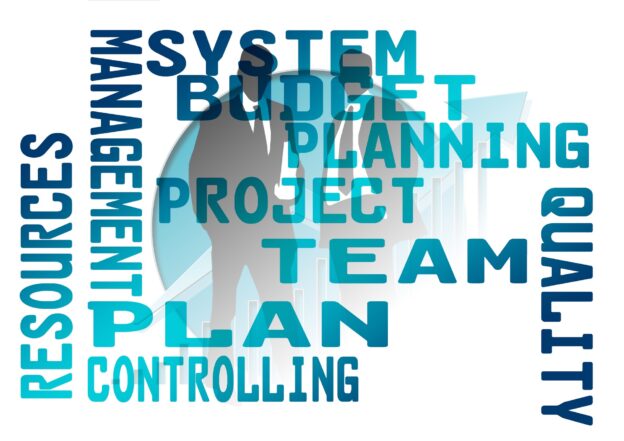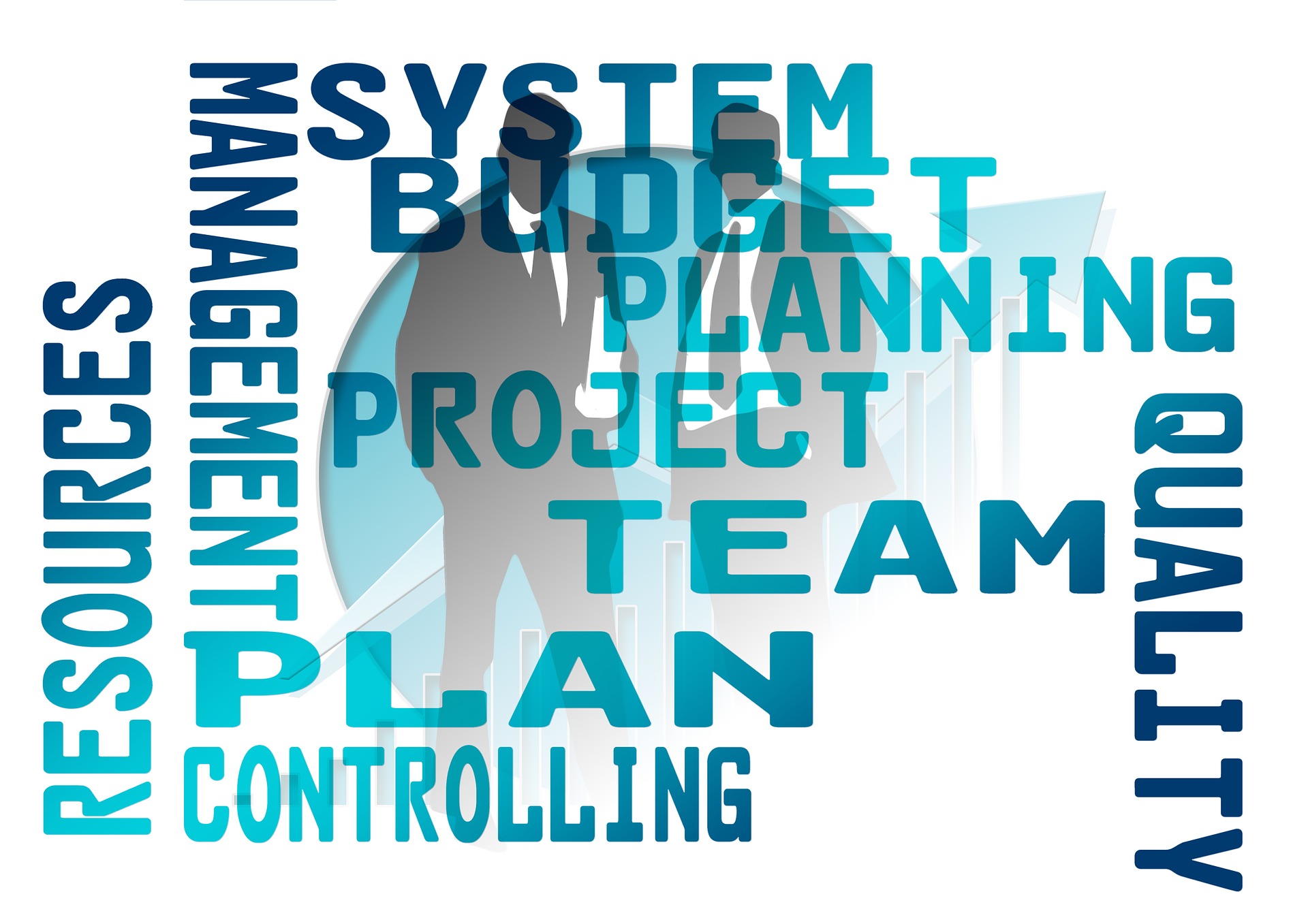“Managing Risk for Business Success”
Introduction
Business Risk Management is a process of identifying, assessing, and mitigating risks that may affect a business. It is an important part of any business’s overall strategy and helps to ensure that the business is able to survive and thrive in the face of potential risks. Risk management helps to identify potential risks, assess their likelihood and impact, and develop strategies to mitigate or eliminate them. It also helps to ensure that the business is able to respond quickly and effectively to any risks that may arise. By taking a proactive approach to risk management, businesses can protect their assets, reduce their costs, and increase their profitability.
Understanding the Basics of Business Risk Management
Business risk management is the process of identifying, assessing, and mitigating potential risks that could negatively affect a business. It is an important part of any business’s operations, as it helps to protect the company’s assets, reputation, and profitability.
The first step in business risk management is to identify potential risks. This involves looking at the company’s operations, processes, and environment to identify any potential threats. This can include anything from natural disasters to cyber-attacks. Once potential risks have been identified, they must be assessed to determine their likelihood and potential impact.
Once risks have been identified and assessed, the next step is to develop strategies to mitigate them. This can involve implementing policies and procedures to reduce the likelihood of a risk occurring, or to reduce the impact if it does occur. It can also involve purchasing insurance to cover potential losses.
Finally, it is important to monitor and review the risk management process on a regular basis. This helps to ensure that the strategies implemented are effective and that any new risks are identified and addressed. This is a part of business consulting.
Business risk management is an important part of any business’s operations. By identifying, assessing, and mitigating potential risks, businesses can protect their assets, reputation, and profitability.
Understanding Potential Risks and Their Impact on Businesses
Businesses face a variety of potential risks that can have a significant impact on their operations. These risks can range from natural disasters to cyber-attacks, and can cause significant financial losses, reputational damage, and disruption to operations. It is important for businesses to understand the potential risks they face and the potential impact they can have on their operations.
Natural disasters, such as floods, hurricanes, and earthquakes, can cause significant damage to businesses. These disasters can cause physical damage to buildings and equipment, as well as disruption to operations. In addition, businesses may face financial losses due to the destruction of inventory and equipment, as well as the cost of repairs and rebuilding.
Cyber-attacks are another potential risk that businesses face. These attacks can cause significant financial losses, as well as reputational damage. Cyber-attacks can also disrupt operations, as businesses may be unable to access their systems or data.
Businesses may also face risks from changes in the economy or industry. These changes can cause financial losses, as businesses may be unable to adjust to the new market conditions. In addition, businesses may face reputational damage if they are unable to keep up with changes in customer expectations or industry standards.
Finally, businesses may face risks from their own employees. These risks can include theft, fraud, or other unethical behavior. These risks can cause financial losses, as well as reputational damage.

It is important for businesses to understand the potential risks they face and the potential impact they can have on their operations. Businesses should develop strategies to mitigate these risks, such as implementing security measures to protect against cyber-attacks, or developing contingency plans in case of natural disasters. By understanding the potential risks and their impact, businesses can take steps to protect themselves and ensure their continued success.
Assessing and Managing External Risks to Your Business
External risks to businesses can come from a variety of sources, including economic downturns, natural disasters, and changes in the competitive landscape. While it is impossible to predict or prevent all external risks, there are steps that businesses can take to assess and manage these risks.
The first step in assessing and managing external risks is to identify the sources of risk. This can be done by conducting a risk assessment, which involves analyzing the external environment and identifying potential threats. This assessment should include an analysis of the economic, political, and social environment, as well as an assessment of the competitive landscape.
Once the sources of risk have been identified, the next step is to develop a risk management plan. This plan should include strategies for mitigating the risks, such as diversifying investments, implementing risk management systems, and developing contingency plans. It should also include strategies for responding to risks, such as developing crisis management plans and establishing communication protocols.
Finally, businesses should regularly monitor and review their risk management plans. This will help ensure that the plans are up to date and that any changes in the external environment are taken into account. It is also important to review the plans periodically to ensure that they are still effective and that any new risks have been identified and addressed.
By taking the time to assess and manage external risks, businesses can protect themselves from potential losses and ensure their long-term success. By taking proactive steps to identify and address potential risks, businesses can ensure that they are prepared for any eventuality.
The Role of Risk Managers in Business Risk Management
Risk managers play a critical role in business risk management. They are responsible for identifying, assessing, and mitigating risks that could potentially affect the organization. Risk managers must have a comprehensive understanding of the organization’s operations, processes, and objectives in order to effectively identify and manage risks.
Risk managers must be able to identify potential risks and develop strategies to mitigate them. This includes analyzing the organization’s operations and processes to identify potential risks, assessing the likelihood of those risks occurring, and developing strategies to reduce the impact of those risks. Risk managers must also be able to communicate the risks and strategies to the organization’s leadership and other stakeholders.
Risk managers must also be able to monitor the organization’s risk management processes and ensure that they are effective. This includes regularly reviewing the organization’s risk management policies and procedures, monitoring the implementation of risk management strategies, and ensuring that the organization is compliant with applicable laws and regulations.
Risk managers must also be able to provide guidance and advice to the organization’s leadership on risk management issues. This includes providing advice on how to best manage risks, developing risk management plans, and providing training and education to the organization’s staff on risk management topics.
Finally, risk managers must be able to report on the organization’s risk management activities. This includes providing regular reports to the organization’s leadership on the effectiveness of the organization’s risk management processes, as well as providing recommendations for improvement.
In summary, risk managers play a critical role in business risk management. They are responsible for identifying, assessing, and mitigating risks that could potentially affect the organization. Risk managers must have a comprehensive understanding of the organization’s operations, processes, and objectives in order to effectively identify and manage risks. They must also be able to monitor the organization’s risk management processes, provide guidance and advice to the organization’s leadership, and report on the organization’s risk management activities.
Developing a Risk Management Plan for Your Business
Risk management is an essential part of any business. It involves identifying, assessing, and mitigating potential risks that could affect the success of the business. Developing a risk management plan is an important step in ensuring that your business is prepared for any potential risks that may arise.
The first step in developing a risk management plan is to identify the risks that could affect your business. This includes both internal and external risks. Internal risks are those that are within the control of the business, such as employee turnover, financial mismanagement, or inadequate processes. External risks are those that are outside of the business’s control, such as natural disasters, economic downturns, or changes in the competitive landscape.
Once the risks have been identified, the next step is to assess the potential impact of each risk. This involves determining the likelihood of the risk occurring and the potential consequences if it does occur. This will help you prioritize the risks and determine which ones need to be addressed first.
Once the risks have been identified and assessed, the next step is to develop strategies to mitigate them. This may involve implementing policies and procedures to reduce the likelihood of the risk occurring, or developing contingency plans to address the consequences if the risk does occur.
Finally, the risk management plan should be regularly reviewed and updated. This will ensure that the plan is up-to-date and that any new risks are identified and addressed.
Developing a risk management plan is an important step in ensuring that your business is prepared for any potential risks that may arise. By identifying, assessing, and mitigating potential risks, you can ensure that your business is well-positioned to succeed in the face of any challenges.
The Role of Insurance in Business Risk Management
Insurance plays an important role in business risk management. It is a form of risk management primarily used to hedge against the risk of a contingent, uncertain loss. By transferring the risk to an insurance company, businesses can protect themselves from potential losses due to accidents, natural disasters, and other unforeseen events.
Insurance can be used to protect businesses from a variety of risks, including property damage, liability, and business interruption. Property damage insurance covers losses due to fire, theft, and other physical damage to a business’s property. Liability insurance covers losses due to legal action taken against a business for negligence or other wrongful acts. Business interruption insurance covers losses due to a business’s inability to operate due to a covered event, such as a natural disaster.
In addition to protecting businesses from losses due to physical damage and legal action, insurance can also be used to protect businesses from financial losses. For example, life insurance can be used to protect a business from the financial losses associated with the death of a key employee. Similarly, disability insurance can be used to protect a business from the financial losses associated with an employee’s inability to work due to an illness or injury.
Insurance is an important tool for businesses to manage risk. By transferring the risk to an insurance company, businesses can protect themselves from potential losses due to accidents, natural disasters, and other unforeseen events. In addition, insurance can be used to protect businesses from financial losses due to the death or disability of a key employee. By taking advantage of the various types of insurance available, businesses can ensure that they are adequately protected from the risks they face.
How to Analyze and Manage Risk Over Time
Risk management is an important part of any business or organization. It involves identifying, assessing, and managing potential risks that could have a negative impact on the organization. By analyzing and managing risk over time, organizations can reduce the likelihood of unexpected losses and ensure that their operations remain successful.
The first step in analyzing and managing risk over time is to identify potential risks. This involves looking at the organization’s operations and identifying any areas that could be vulnerable to potential losses. This could include anything from financial risks to operational risks. Once potential risks have been identified, they should be assessed in terms of their likelihood and potential impact. This will help to determine which risks are most likely to occur and which ones could have the most significant impact on the organization.
Once potential risks have been identified and assessed, the next step is to develop a risk management plan. This plan should include strategies for mitigating the risks and reducing their potential impact. This could include implementing safety protocols, purchasing insurance, or investing in risk management software. The plan should also include a timeline for monitoring and evaluating the risks over time.
Finally, it is important to regularly monitor and evaluate the risks over time. This will help to ensure that the risk management plan is effective and that any changes in the organization’s operations are taken into account. It is also important to review the plan periodically to ensure that it is still relevant and up to date.
By analyzing and managing risk over time, organizations can reduce the likelihood of unexpected losses and ensure that their operations remain successful. By taking the time to identify, assess, and manage potential risks, organizations can protect themselves from potential losses and ensure that their operations remain successful.
Examples of Risk Management Processes in Organizations
Risk management is an important process for organizations of all sizes. It involves identifying, assessing, and controlling potential risks that could have a negative impact on the organization. By implementing a risk management process, organizations can reduce the likelihood of unexpected losses and ensure that their operations remain efficient and profitable. Here are some examples of risk management processes that organizations can use:
1. Risk Identification: The first step in the risk management process is to identify potential risks. This involves analyzing the organization’s operations and identifying any potential threats or hazards that could have a negative impact. This could include anything from natural disasters to cyber-attacks.
2. Risk Assessment: Once potential risks have been identified, they must be assessed to determine their likelihood and potential impact. This involves analyzing the potential risks and assigning a risk rating based on their severity.
3. Risk Control: After assessing the risks, organizations must develop strategies to control them. This could involve implementing policies and procedures to reduce the likelihood of the risk occurring, or purchasing insurance to cover any potential losses.
4. Risk Monitoring: Risk management is an ongoing process, and organizations must monitor their risks on an ongoing basis. This involves regularly reviewing the organization’s operations and assessing any changes in the risk environment.
By implementing a risk management process, organizations can ensure that their operations remain efficient and profitable. By identifying, assessing, and controlling potential risks, organizations can reduce the likelihood of unexpected losses and ensure that their operations remain profitable.
The Impact of Business Risk Management on Business Objectives
Business risk management is an essential part of any successful business. It is the process of identifying, assessing, and mitigating potential risks that could negatively impact a business’s objectives. By proactively managing risks, businesses can protect their assets, minimize losses, and maximize profits.
Risk management is a critical component of any business strategy. It helps businesses identify potential risks and develop strategies to mitigate them. This can include developing policies and procedures to reduce the likelihood of risks occurring, as well as creating contingency plans to address any risks that do occur. Risk management also helps businesses identify opportunities for growth and improvement.
The impact of business risk management on business objectives can be significant. By proactively managing risks, businesses can reduce the likelihood of losses and maximize profits. Risk management can also help businesses identify opportunities for growth and improvement. Additionally, risk management can help businesses protect their assets and ensure compliance with applicable laws and regulations.
Business risk management can also help businesses improve their reputation and customer loyalty. By proactively managing risks, businesses can demonstrate their commitment to safety and security, which can help build trust with customers. Additionally, risk management can help businesses identify potential areas of improvement and develop strategies to address them.
In conclusion, business risk management is an essential part of any successful business. It helps businesses identify potential risks and develop strategies to mitigate them. Additionally, it can help businesses protect their assets, maximize profits, and improve their reputation and customer loyalty. By proactively managing risks, businesses can ensure their objectives are met and their business is successful.
Risk Management Strategies for Companies
Risk management is an important part of any successful business. It involves identifying, assessing, and controlling potential risks that could have a negative impact on the company. By implementing effective risk management strategies, companies can reduce the likelihood of losses and maximize their profits. Here are some strategies that companies can use to manage risk:
1. Establish a Risk Management Plan: Companies should create a comprehensive risk management plan that outlines the steps they will take to identify, assess, and control risks. This plan should include the roles and responsibilities of each department, the processes for identifying and assessing risks, and the strategies for mitigating and controlling them.
2. Identify Risks: Companies should identify potential risks that could affect their operations. This includes both internal and external risks, such as financial, operational, legal, and reputational risks. Companies should also consider the potential impact of these risks on their operations.
3. Assess Risks: Companies should assess the likelihood and potential impact of each risk. This will help them determine which risks are most likely to occur and which ones have the greatest potential to cause losses.
4. Develop Risk Mitigation Strategies: Companies should develop strategies to mitigate and control risks. This could include implementing policies and procedures, purchasing insurance, or setting up contingency plans.
5. Monitor and Review: Companies should regularly monitor and review their risk management plan to ensure that it is up to date and effective. They should also review their risk management strategies to ensure that they are still appropriate and effective.
By implementing these risk management strategies, companies can reduce the likelihood of losses and maximize their profits. By taking the time to identify, assess, and control risks, companies can ensure that they are prepared for any potential risks that may arise.
Q&A
Q1: What is Business Risk Management?
A1: Business Risk Management is the process of identifying, assessing, and mitigating risks that could potentially affect a business’s ability to achieve its objectives. It involves identifying potential risks, assessing their likelihood and impact, and developing strategies to manage them.
Q2: What are the benefits of Business Risk Management?
A2: Business Risk Management can help businesses identify and manage potential risks before they become problems. It can also help businesses reduce costs associated with risk, improve operational efficiency, and increase profitability.
Q3: What are the steps involved in Business Risk Management?
A3: The steps involved in Business Risk Management include identifying potential risks, assessing their likelihood and impact, developing strategies to manage them, and monitoring and evaluating the effectiveness of the strategies.
Q4: What are some common risks that businesses face?
A4: Common risks that businesses face include financial risks, operational risks, legal risks, and reputational risks.
Q5: How can businesses identify potential risks?
A5: Businesses can identify potential risks by conducting a risk assessment, which involves analyzing the potential risks and their likelihood of occurring.
Q6: How can businesses assess the likelihood and impact of potential risks?
A6: Businesses can assess the likelihood and impact of potential risks by analyzing the potential consequences of the risks and the probability of them occurring.
Q7: How can businesses develop strategies to manage risks?
A7: Businesses can develop strategies to manage risks by implementing risk mitigation strategies, such as insurance, diversification, and hedging.
Q8: How can businesses monitor and evaluate the effectiveness of their risk management strategies?
A8: Businesses can monitor and evaluate the effectiveness of their risk management strategies by regularly reviewing their risk management plans and assessing the results of their strategies.
Q9: What are some best practices for Business Risk Management?
A9: Some best practices for Business Risk Management include regularly reviewing and updating risk management plans, conducting regular risk assessments, and implementing effective risk mitigation strategies.
Q10: What are the key elements of a successful Business Risk Management program?
A10: The key elements of a successful Business Risk Management program include identifying potential risks, assessing their likelihood and impact, developing strategies to manage them, monitoring and evaluating the effectiveness of the strategies, and regularly reviewing and updating risk management plans.
Business Risk Management Consultation
When you need help with Business Risk Management call Jeremy D. Eveland, MBA, JD (801) 613-1472 for a consultation.
Jeremy Eveland
17 North State Street
Lindon UT 84042
(801) 613-1472
Home
Related Posts
Seller Financing A Business
Management Consulting
Running a Business
Creating Business Systems
Dispute Resolution
Mediation
Arbitration
OSHA Law
Sustainable Business Model
Business Success
Management Training
Leadership Training
Estate Planning Lawyer West Valley City Utah
Business Contract Lawyer Spanish Fork
Accord and Satisfaction
Civil Litigation
Business Market Research
Corporate Attorney Riverton Utah
Advantages of Hiring a Utah Personal Injury Lawyer
Full Service Law Firm
Estate Planning Lawyer Provo Utah
Line of Credit
Issuance of Stock
Fair Labor Standards Act
Company Lawyer
Business Lawyer West Valley City Utah
Non-Profit Organizations
Creation of Trusts
Business Risk Management







